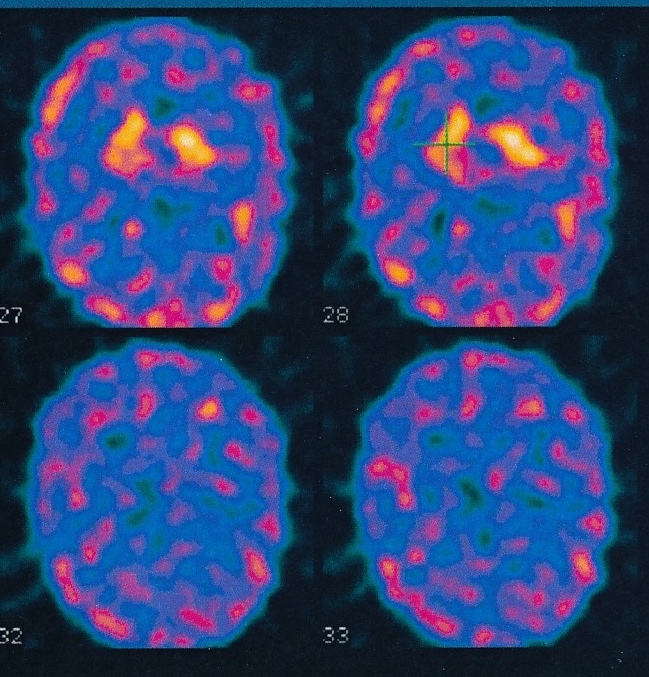Session Information
Date: Thursday, June 8, 2017
Session Title: Parkinson's Disease: Neuroimaging And Neurophysiology
Session Time: 1:15pm-2:45pm
Location: Exhibit Hall C
Objective: Our objective is to report a case of persistent L-dopa responsive hemiparkinsonism after Cryptococcal meningoencephalitis in an immunocompetent man.
Background: Fungal infections of the CNS are being recognized with increasing frequency due to both the growing population of immunocompromised patients and improvements in diagnostic techniques. The Cryptococcal meningoencephalitis is far more frequent in patients with some sort of immunosuppression but it occurs in patients with intact immune system. Hemiparkinsonism is a very rare condition with few reports in the literature.
Methods: A 43-year-old Caucasian immunocompetent male was admitted to the hospital with a proved diagnosis of meningoencephalitis, with fever, severe headache, mental confusion and somnolence. CSF analysis disclosed Cryptococcus neoformans. At the time of hospital discharge from the hospital he had developed with left hemiparkinsonism and mild cognitive decline.
Results: A 43-year-old Caucasian immunocompetent male was admitted to the hospital with a proved diagnosis of meningoencephalitis, with fever, severe headache, mental confusion and somnolence. CSF analysis disclosed Cryptococcus neoformans. Brain MRI showed images on right basal ganglia compatible with Cryptococcal abscesses, which later evolved to encephalomalacia on the right striatum on a follow-up exam after adequate treatment with amphotericin B and ventricular shunt [Figure1]. At the time of hospital discharge from the hospital he had developed with left hemiparkinsonism and mild cognitive decline. A brain SPECT with TRODAT-1 [Figure2] demonstrated moderate reduction of dopamine transporter binding on the right striatum. The patient was treated with levodopa-benserazide 100/25 mg thrice daily, with remarkable improvement of the parkinsonian syndrome. Hemiparkinsonism secondary to Cryptococcal meningoencephalitis leading to striatum encephalomalacia is a rare etiology of secondary parkinsonism, even more so with documented dopamine depletion.1,2
Conclusions: Hemiparkinsonism secondary to Cryptococcal meningoencephalitis leading to striatum encephalomalacia is a rare etiology of secondary parkinsonism, even more so with documented dopamine depletion.1,2
References: 1. Bouffard JP, Mena H, Ripple M, Troncoso J. Mesencephalic cryptococcal abscesses presenting with parkinsonism as an initial manifestation of AIDS. Mov Disord. 2003; 18 :1354-1357.
2. Wszolek Z, Monsour H, Smith P, Pfeiffer R. Cryptococcal meningoencephalitis with Parkinsonian features. Mov Disord 1988; 3: 271–273.
To cite this abstract in AMA style:
G. Fabiani, R. Filho, F. Germiniani, H. Teive. Persistent L-Dopa Responsive Hemiparkinsonism After Cryptococcoal Meningoencephalitis in an Immunocompetent Man [abstract]. Mov Disord. 2017; 32 (suppl 2). https://www.mdsabstracts.org/abstract/persistent-l-dopa-responsive-hemiparkinsonism-after-cryptococcoal-meningoencephalitis-in-an-immunocompetent-man/. Accessed April 1, 2025.« Back to 2017 International Congress
MDS Abstracts - https://www.mdsabstracts.org/abstract/persistent-l-dopa-responsive-hemiparkinsonism-after-cryptococcoal-meningoencephalitis-in-an-immunocompetent-man/


